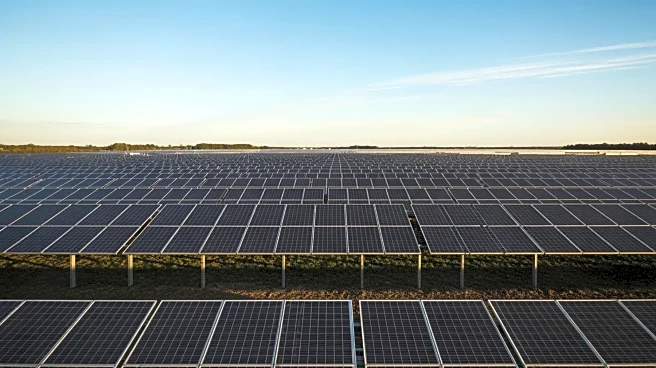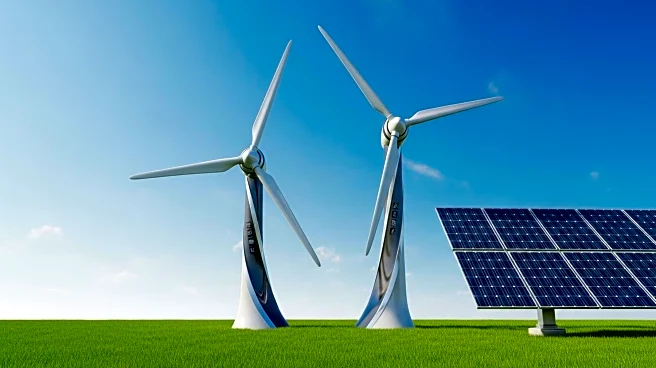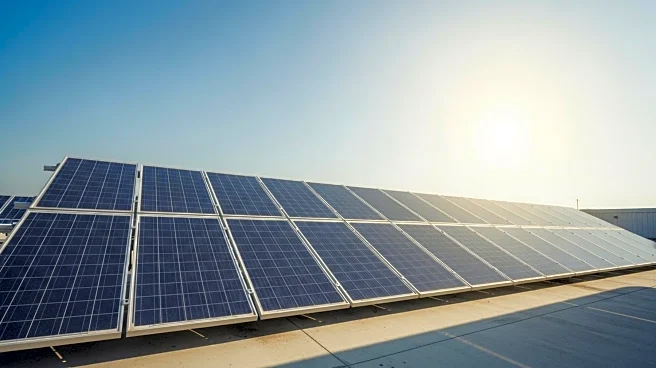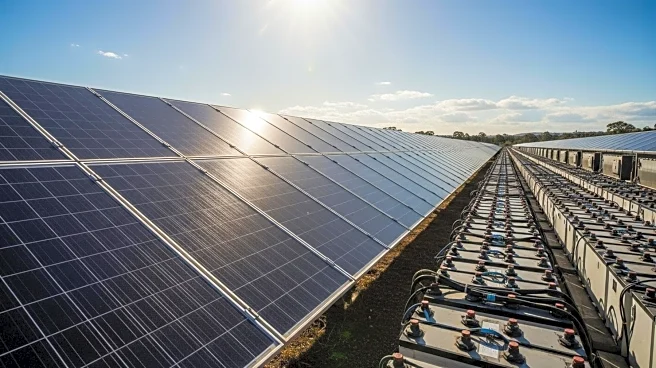What's Happening?
The president signed a significant tax cut bill earlier this year, which phases out most federal tax credits for renewable energy installations. This legislative change has prompted a surge in renewable energy projects,
as developers rush to take advantage of the expiring tax credits. Analysts predict that the United States will see record or near-record additions of renewable energy and battery installations through 2027. BloombergNEF has revised its forecast for new wind, solar, and battery installations in 2026, increasing it by 10 percent. To qualify for the federal tax credits, wind and solar projects must be under construction by July, leading developers to order equipment like power transformers and solar panels earlier than usual.
Why It's Important?
The phasing out of tax credits for renewable energy installations could have significant implications for the U.S. energy sector. While the immediate rush to capitalize on the remaining credits may boost renewable energy capacity in the short term, the long-term impact could be a slowdown in new projects once the credits are fully phased out. This could affect the country's ability to meet climate goals and transition to cleaner energy sources. The rush to complete projects may also strain supply chains and increase costs for developers, potentially impacting the economic viability of future projects.
What's Next?
Developers are expected to continue accelerating their project timelines to meet the July deadline for tax credit eligibility. This may lead to increased competition for resources and equipment, potentially driving up prices. Stakeholders in the renewable energy sector, including policymakers and industry leaders, may need to consider alternative incentives or policies to sustain growth in renewable energy installations beyond the expiration of the current tax credits.
Beyond the Headlines
The legislative change highlights the ongoing debate over the role of government incentives in promoting renewable energy. The decision to phase out tax credits may reflect broader political and economic priorities, such as reducing government spending or shifting focus to other energy sources. The impact on the renewable energy sector could also influence public opinion and policy discussions around climate change and energy independence.











